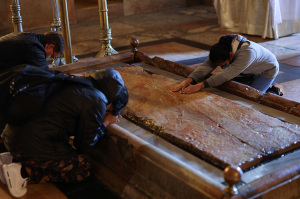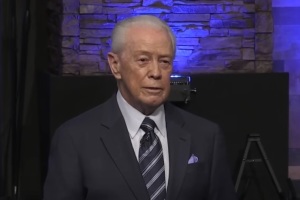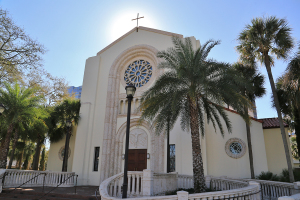How the 'Religious Right' Was Formed and the 2012 Election
When I first became active politically, in the national groundswell of support for Sen. Barry Goldwater in the late 1950s and early 1960s, what we now call social issues were not political issues.
In his entire presidential campaign, I believe Sen. Goldwater was never asked if he favored making abortion legal. Neither was he asked if he favored making bank robbery legal.
Abortion and monogamous marriage between one man and one woman were among the many settled legal and moral issues in American culture, and most theologically conservative leaders thought political participation was no part of their calling.
But then the political left began to bring into politics its hostility to traditional moral principles, and growing government power became the enemy of family values across America.
The left continues its efforts to undermine family values and religious faith, most recently evidenced by the Democratic Party's initially forgetting even to mention God in its 2012 party platform. God was an afterthought, inserted because of much criticism.
In the 1970s, the left invalidated in every state all laws which protected unborn babies. They began attacking the traditional institution of marriage. And among many other assaults on our culture, they tried to close down conservative Christian schools.
Fed up, many conservative pastors decided in the 1970s to defend their beliefs through the public policy process.
In a few years, whole denominations switched parties. The surge of theologically conservative Americans into politics changed the composition of the electorate and contributed mightily to the nomination and election of President Ronald Reagan in 1980.
As they do whenever large numbers of conservatives newly decide to become political participants, the leftist politicians, content-free Republicans, and so-called "mainstream" news media warned that what they called "the Religious Right" was a danger to the Republic – dimwitted, uncouth, and savage people who would destroy the Republican Party.
It didn't work out that way, did it?
Social conservatives began to organize coalitions for specific purposes.
A pioneer conservative coalition builder was Phyllis Schlafly. In her spectacularly successful fight to defeat the so-called "Equal Rights Amendment," she gathered together Evangelicals, Catholics, Mormons, and anyone else willing to fight against the ERA.
These allies distrusted each other and had intense differences in theology. They had never worked together before. Phyllis pulled together her coalition by saying, "We must be broad-minded enough to allow anyone to oppose the ERA for the reasons of their choice."
The decision points in the public policy process are mostly elections and legislative battles. In specific elections and legislative battles, a wise conservative will seek allies without respect to disagreements on other issues. The object is to win a majority in that election or that legislative battle.
Starting in the 1970s, U.S. conservatives grew some existing conservative organizations dramatically and created many large new ones.
Time and again, they formed coalitions in election contests and legislative battles where conservative principles of limited government, free enterprise, strong national defense, and traditional family values were at stake.
Time and again, the same conservative leaders sat around the same tables to fight on the same side against their common enemies on the left.
Each element of the coalition frequently worked with the others while maintaining its own institutional independence. For the first time there arose what could fairly be called an effective conservative movement.
The realization spread, for example, that there could not be political victory for economic conservatives without a working alliance with social conservatives – and that, to win public policy battles, social conservatives must work often with economic conservatives and libertarian conservatives.
Let me turn now to a brief consideration of where we are now and where we should go from here.
Everything is on the line this year.
Personally, I am strongly supporting Mitt Romney, both financially and otherwise.
In the last few decades, I have recruited and trained many thousands of conservative activists and leaders who also now support Mitt Romney and are working hard for his election.
President Barack Obama is the personification of leftist ideology. The fundamental changes he is making in America are all fundamentally ruinous for our country. He must be replaced if we can do it.
With hardly any exceptions, the entire conservative movement agrees with me and wants Gov. Mitt Romney to win. Good.
The presidential election still could go either way, but I believe it's more likely that Mitt Romney and Paul Ryan will be the next President and Vice President of the United States.




























